- Entheogens, the African Diaspora, and BIPOC communities with Kufikiri Imara - January 20, 2021
- Innovating Native American Health Care Using Culture and Technology With Sutton King - January 11, 2021
- Navigating the Personal and Political in MDMA-assisted Psychotherapy with Sara Reed - December 29, 2020
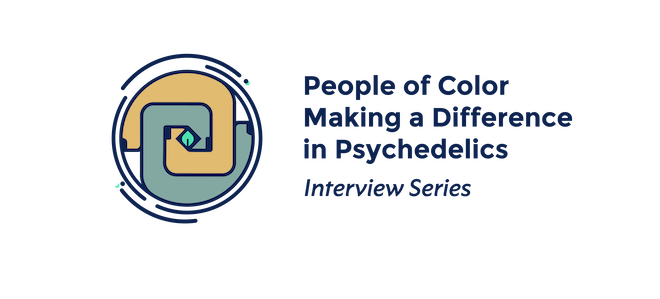
Originally from Oceanside, California, Chor Boogie is a critically acclaimed aerosol artist and Iboga provider. It was at the age of 13 that Boogie first felt the gravitational pull towards the spray can, and it took him from the streets to the international circuit, with all the trimmings of success. It was his own experience overcoming his addiction with Iboga, the medicine of his ancestors, however, that propelled Chor Boogie on the path to help others heal with Iboga.
According to Boogie, the purpose of Iboga is “to heal the soul.” Given that Iboga is becoming known in Western medicine as a powerful, life-changing treatment for addiction and PTSD, his words speak to why Iboga works. “We guide you deep,” Boogie said, “so you can find everything that disconnects you from you.”
Everything is an art form to Chor Boogie. His art informs his healing practice and vice versa. Integrating traditional African imagery and his Iboga visions in his artworks, Boogie visually transmits the very heart of the medicine and the Bwiti culture of healing. Boogie is passionate about including the voices of Indigenous relations and teachers in the global psychedelic renaissance.
In this interview, we discuss Chor Boogie’s career as an aerosol artist, color therapy, beauty, the industry of psychedelics, as well as overcoming addiction and providing healing with Iboga.
In this interview, we discuss Chor Boogie’s career as an aerosol artist, color therapy, beauty, the industry of psychedelics, as well as overcoming addiction and providing healing with Iboga.
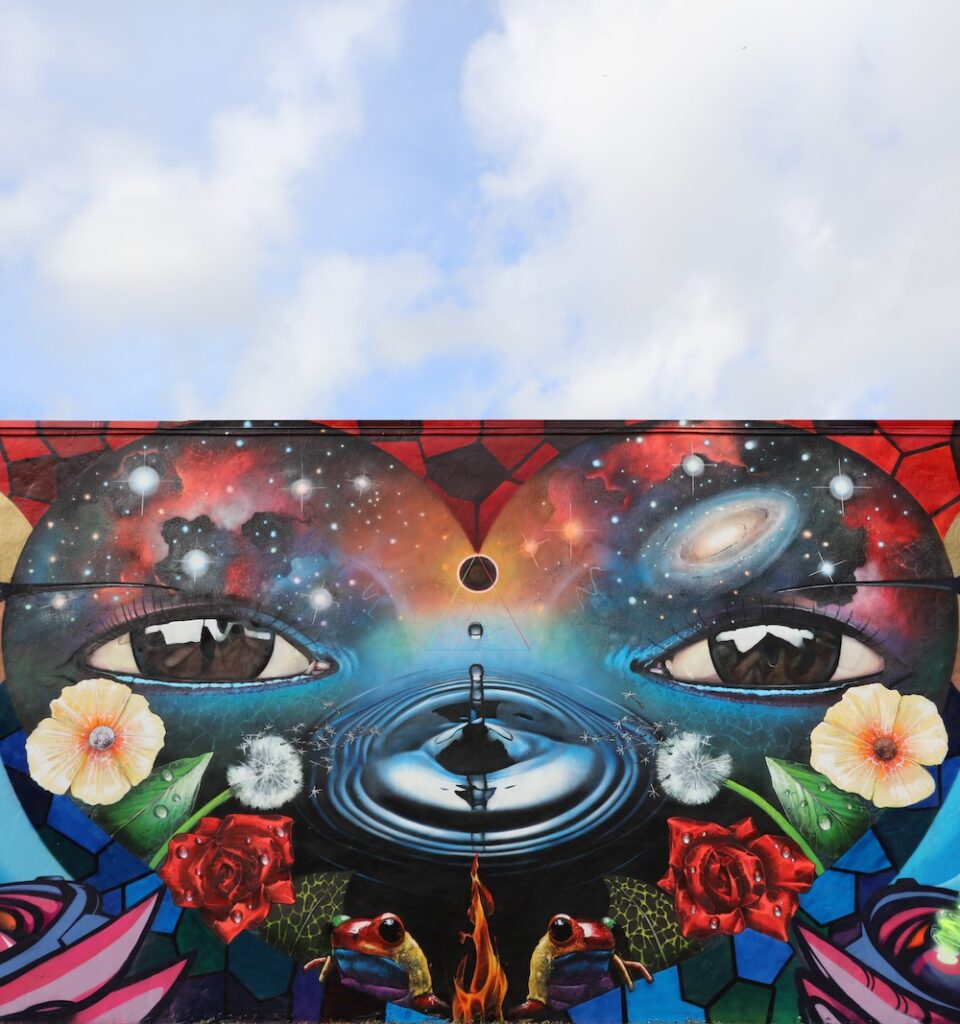
If anyone saw you with spray paint, you were automatically a criminal.
Maria Mocerino: What was it like the first time you spray painted? How did that happen?
Chor Boogie: In those days—the early 90s—this medium wasn’t really looked upon as it is today. There were certain circles that did accept it; but no, there was still a negative connotation. If anyone saw you with spray paint, you were automatically a criminal. (laughter)
I started doing it on the streets, of course. We used to go down in these places that we called yards, aqueducts, and all types of places. These were our sketch books, our black books. There was more of an illegal aspect in the beginning, for sure. That’s how it started.
The first time I hit that can? Wow, it was one of the most liberating things that I ever did in my life at that age. I never put it down since, and I’ve been involved with it for the past 30 years. It was very magical, like I just gave birth to a child. I needed to take care of it, harness it, and try to train myself with it. I consider the spray can a tool of communication that helped me find myself.
MM: Were there images back then that you worked with particularly?
CB: In San Diego, we were following suit with what LA was bringing. San Diego and LA both had their own style, but they started around, I want to say, the early 80s. LA might have a little bit more history when it comes to their gang culture and all that stuff. But we’re talking about aerosol culture, which is totally separate and different from that. I’m actually writing a big report about decolonizing the aerosol culture for the Rand corporation. But when it comes to styles? There are letter styles and some guys that do characters. I was one of the guys that did characters and imagery.
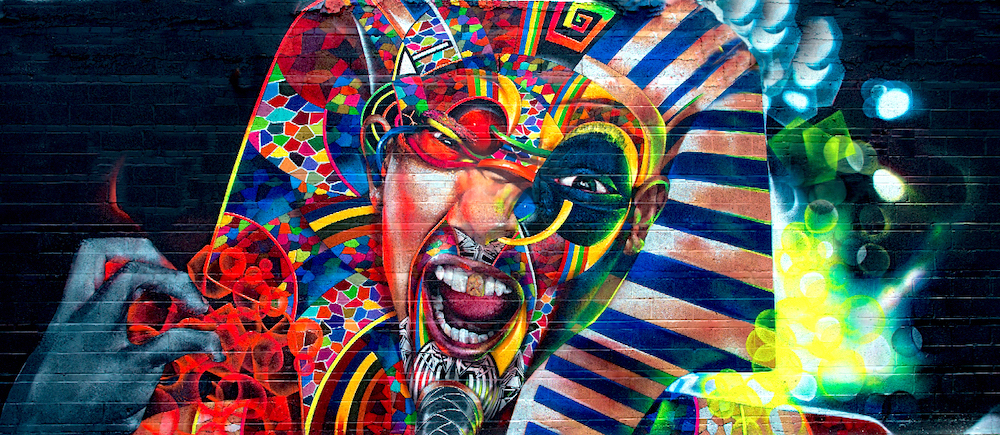
In the 90s, guys started to be influenced by crazy shit, like Salvador Dali, you know what I mean? Who could paint the craziest shit? That was the question, especially on the West Coast.
When I first started, there were b-boy characters, which were influenced by New York, which is where aerosol culture started. In the 90s, guys started to be influenced by crazy shit, like Salvador Dali, you know what I mean? Who could paint the craziest shit? That was the question, especially on the West Coast. It came to dominate the world when it came to realism or any style of character.
Back then, we did everything freehand: just you and the spray can. “Freestyle,” that’s what we called it. Then, the future started coming in with all these “tools.” These tools have been around, but the aerosol culture was kinda like: “Fuck that. We’re going back to how the master’s did it. We create these masterpieces naturally, organically, and straight off the top.”But! Things change…(laughter)
The media called it “graffiti.” We don’t like using that word because that’s not what the culture called it in the beginning.
MM: (laughter)Yes, things change. In your work, you talk about color therapy as it relates specifically to the aerosol culture… what is that?
CB: Me and another artist named Vulcan had this pet peeve when it came to the terminology that was given to the aerosol culture by the media. The media called it “graffiti.” We don’t like using that word because that’s not what the culture called it in the beginning.
We were in the studio one day, trying to figure out what we could call this thing. We were using mass amounts of colors in our artworks, like any color known to man, we’ll use it! We don’t discriminate when it comes to color. (laughter) I took the initiative to make a theory off of it, using color theories of the past but relating it to the aerosol culture.
Each color that we use in our murals—our masterpieces, our creations—has a healing attribute. Whether you focus on one, or all of them, you embrace all the attributes of the colors. I’ve written a lot on it. If you think about it, we’re in living color every day.
MM: You said this, which I thought was cool: “The attraction to beauty shouldn’t be judgmental but a connection of feeling…” What do you mean by that?
CB: A lot is taken at face value, especially nowadays, everything is manipulated in bulk because the facade is more important than what’s going on inside. And the inside is connected to your feelings.
I’m not saying beauty isn’t important, but it goes deeper than that. There is beauty on the inside and on the outside. When it comes to the colors, it’s about acknowledging it. In America, oh my god, the freakin’ issues. It’s ridiculous. People just don’t want to acknowledge things. It’s like, “Yo, let’s sweep it under the rug. Let’s take someone else’s culture, manipulate it, and make it seem like it’s ours, and they have to keep their mouths shut about it.”
MM: Iboga just came into my mind when you were talking about acknowledging the issues. How did you get introduced to Iboga?
CB: Growing up on the streets, I ended up partying too much, getting addicted to drugs, alcohol, and everything else: jails, institutions, death, all of it. I ended up getting clean at the age of 22 without plant medicines and stayed clean for 13 years. I traveled the world, built up my whole art career, and ended up in circles like: what the hell am I doing here? I decided to jump the sober ship and go back into party mode. That kept on for a couple years and then, lo and behold, I was at the doorstep of Iboga, you know? My ancestors were pushing me to that door.
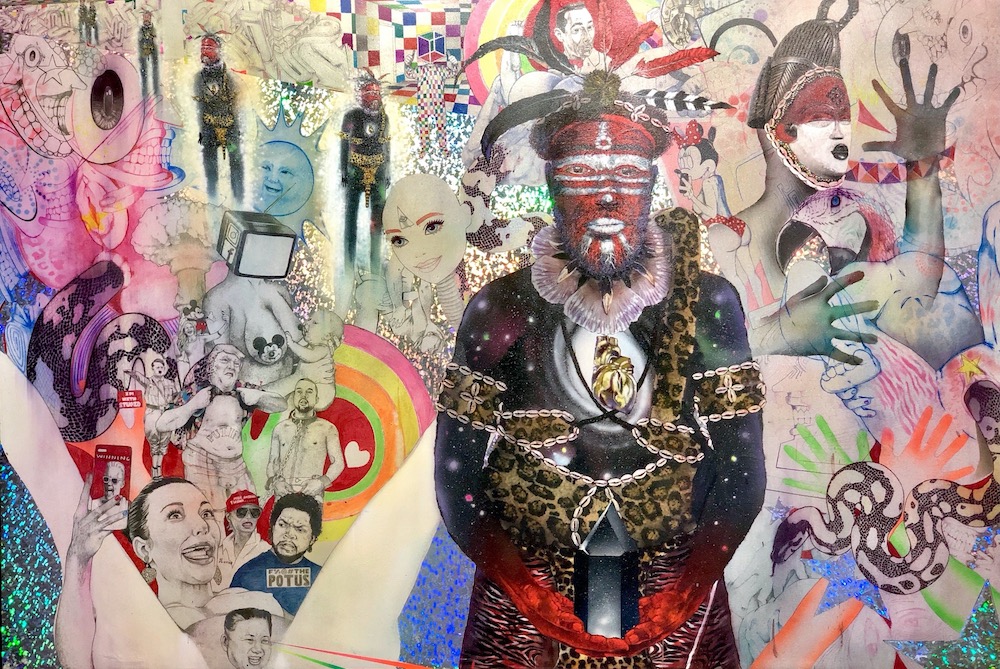
Personally, I have African roots, so Iboga felt like I was going home. That’s my medicine.
I had never seen anything like Iboga. It was basically like, here’s the red pill: You’re unplugging from the Matrix. As I was unplugging, I was going down these rabbit holes of who I really am… who we were really are… how important this earth is… the spirit world… my ancestors… Personally, I have African roots, so Iboga felt like I was going home. That’s my medicine.
Iboga showed me the family tree of plant medicines. It told me how important planet earth is, how deeply rooted we are to it. The earth is really our mother. Science is “curious” in terms of figuring out how it works, but they’ll never go as deep as the plant medicine can take you. It’ll show the scientist what he’s really talking about. I’ve seen it in healing people. Doctors, scientists, and other “smart” people do plant medicine, and their whole mind explodes. (laughter)
MM: Literally…
CB: They can’t believe it!
I’m not saying that the medical model doesn’t serve a purpose. To me, it’s about the art form, too.
MM: Since you bring up doctors, I appreciate what you say about the tribe versus the clinical model. What do you think about how these medicines should be administered?
CB: I’m sure that it has helped the advancement of civilization, even helped us live longer. I’m not saying that the medical model doesn’t serve a purpose. To me, it’s about the art form, too.
The system has to control everything though. We can build a story from the top all the way down to the little things that matter, and even something as small as a dollar bill. And money doesn’t even do anything, it just sits there, it’s paper! It’s the energy behind this paper that controls everything.
I see the psychedelic world. There are people that are going to put the monkey suit on and dance just to get this law passed. There are people that are going to make sacrifices and do things just for the good of humanity. I just think it doesn’t have to be that damn hard. In reality, we could put our egos aside and look at how some of these other countries do things…
MM: Right, like bringing in Indigenous doctors, you talk a lot about this too.
CB: Especially at those psychedelic events. I don’t even like the word “psychedelic.”
Psychedelic is a term derived from a medical or science standpoint, so no, I’m not down with it.
MM: Why don’t you like the term psychedelic?
CB: These are plants, man, plant medicines. Psychedelic is a term derived from a medical or science standpoint, so no, I’m not down with it.
Anyway, I’ve spoken at quite a few of these events. And it’s like, you want to heal the world with these medicines, but you’re not bringing the people to the table that introduced them to you? I know that they’ve been brought to the table but that’s just sprinkling a little black pepper on your meal. That’s not balanced.
I just want to heal people with Iboga because I’ve seen this appropriation game.
I just want to heal people with Iboga because I’ve seen this appropriation game. It’s not just in this world, it’s in all worlds. I don’t like making it a racial thing, but White people, y’all need to check yourself. That’s just how it is.
There’s something underlying White Europeans in that they want this control, even over their own people but mainly over everybody else.
MM: When you say check yourself, what do you mean?
CB: I just watched a series called “Reconstruction: America After the Civil War” on PBS. I just learned stuff that I never even knew existed in African American history. You could see the roller coaster ride of what the government has done to people. The freed slaves were given a little bit of power, then they took it back from them. Then, they gave it back again, and then, they took from them again! It’s not just African Americans, it’s anybody brown. I mean, Native Americans? It’s crazy shit. There’s something underlying White Europeans in that they want this control, even over their own people but mainly over everybody else.
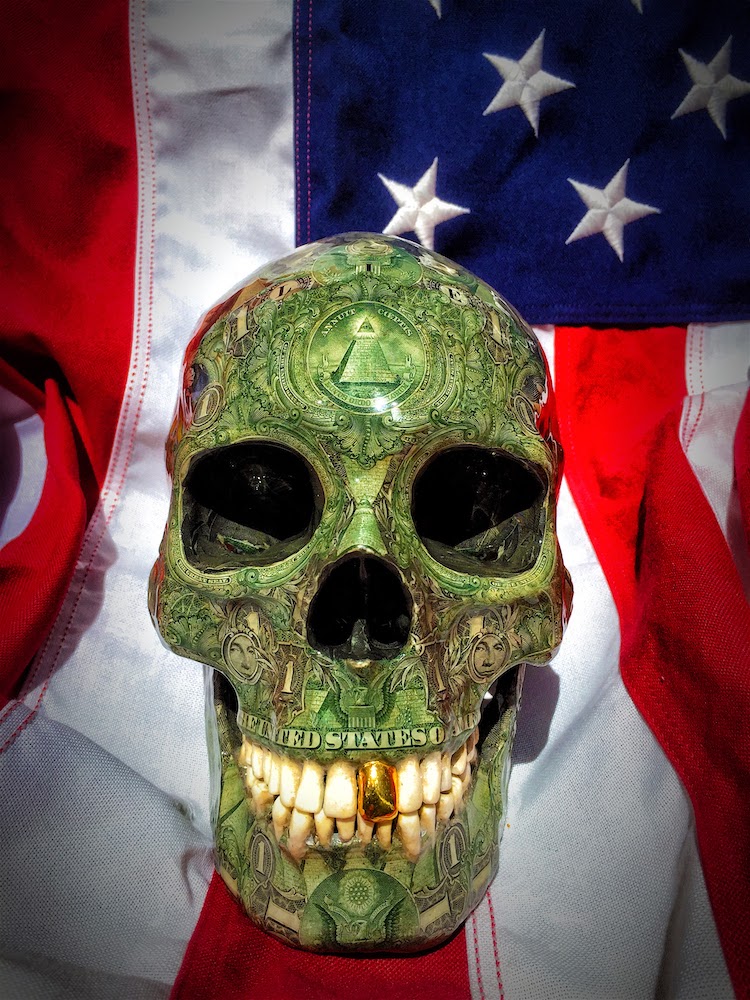
MM: Right now, there are many, many opinions about big business coming into the psychedelic space. What are your thoughts about that?
CB: When it comes to corporations being involved, who is going to stop it? It’s inevitable. You can’t stop people from taking plant medicines no matter who they are. If somebody needs help, they need help!I don’t care how much money they got, or who they are. Bring all the powers that be—the elite and their children—to me. We’ll give them Iboga, and we’ll see how the world could change.
As a healer, if the Devil is crying for healing and you turn them away, there is something wrong with that. I don’t care who they are, even a murderer.
As a healer, if the Devil is crying for healing and you turn them away, there is something wrong with that. I don’t care who they are, even a murderer. You could change their mentality. That’s the main purpose of plant medicines.
“Westworld” is insecure, and being judgmental is a part of that. I’m not saying being judgmental is wrong; I’m just saying that you have to develop a relationship with everything that’s in your energy field, within you and without.
MM: I appreciate you calling healing an art form.
CB: It’s a part of my philosophy. Everything is art. Everything from landscaping to building your house to the food we eat to raising animals: It’s an art form. The wind is an art form. But we take it for granted.

I had just come back from Africa. My wife and I had just gotten initiated and did the right of passage in the Bwiti tradition.
MM: Can you share an Iboga vision that you had?
CB: I had just come back from Africa. My wife and I had just gotten initiated and did the right of passage in the Bwiti tradition. I ended up meeting another initiate in Northern California and we had a ceremony with Iboga.
A pyramid structure came out of the darkness. I was in the spirit world. It had a lukewarm look to it, like a hot night in the desert. I flew up to the tip top of the pyramid. In the center, there was a 12-foot Bwiti shaman universal being. He had his hands up with a beam of light shooting straight into the sky. His skin was made of stars and galaxies. I was like, “what does he have in his hands?” He looked at me with a big smile, eyes all bright and big. He brought his hands down and in his hands was a live beating heart. He was like, “NOW what are you going to do with it?”
I opened my chest cavity like a board game. There was no heart there, it was just this black cloud. I grabbed the heart and put in my chest. I could feel my heart, in real physical time, surging and connecting. It was like I got a new heart. I was back home.
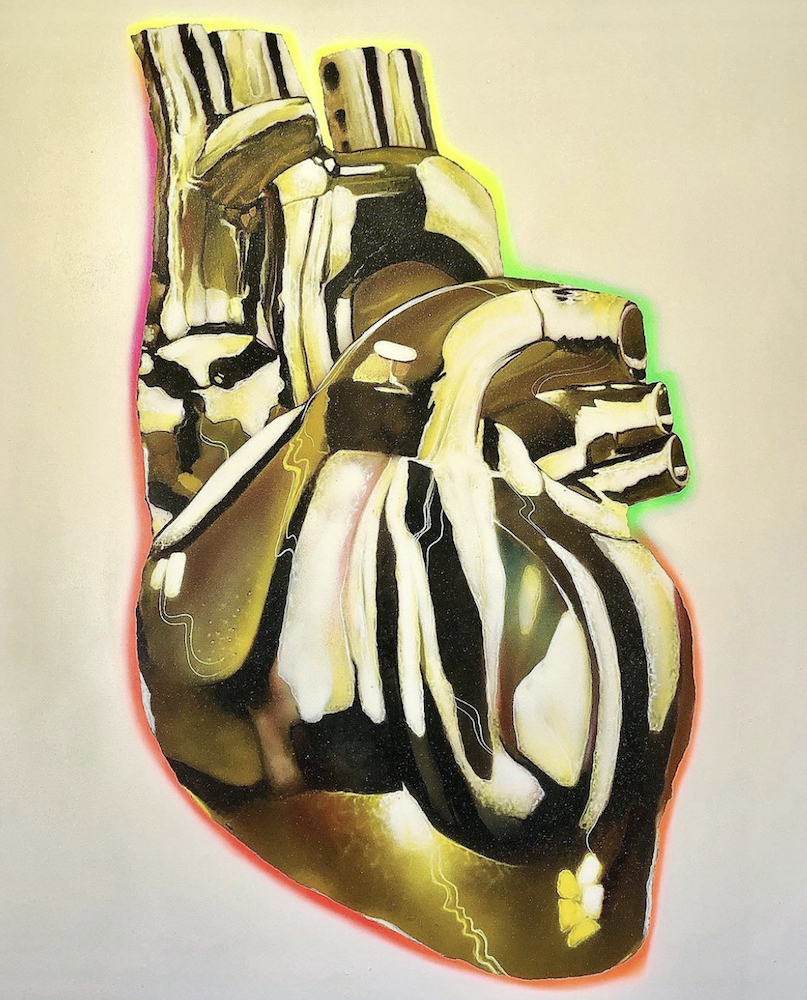
All of a sudden, there was a light above me. My soul said,“put your hands in it!” I pulled out this grail, like the first cup ever! It had a liquid in it, bright like the sun. This voice said, “pour it on your heart!” I could feel it, hot like the sun, in physical time, molding my heart into gold. Then, I closed the board game, gave thanks to my ancestors, and flew off. That’s one journey right there.
I believe that ibogaine has a purpose to help people with addiction, but Iboga will help reconnect them to their soul. Technically, that’s the purpose of Iboga.
MM: What’s the difference between Iboga and Ibogaine?
CB: Iboga has 12 or 13 alkaloids. Ibogaine has one. I believe that ibogaine has a purpose to help people with addiction, but Iboga will help reconnect them to their soul. Technically, that’s the purpose of Iboga. A lot of people are disconnected from their souls.
MM: As an Iboga provider, you guide people to their soul, then?
CB: As providers, we’re trained to guide people to their whole soul. We guide you deep. You have to find everything that disconnects you from you. We help you reconnect to you; it’s a whole journey. I’ve never seen anything like this on the face of the Mother Earth! I couldn’t believe that magic was real!
I had never seen nothing like this on the face of the planet, and I’m not a hippy, I’m from the streets.
MM: You’ve always known magic is real, haven’t you?
CB: Not until I went to Africa, not until I got involved with these plant medicines and did Iboga. If Iboga could break me—Chor Boogie, and I’m not an easy person to break—and change my whole world and perspective? That’s magic. It relieved me from addiction in 24 hours! That’s magic. That is spirit. I had never seen nothing like this on the face of the planet, and I’m not a hippy, I’m from the streets.
Art by Mariom Luna.
Take a minute to browse our stock:
Did you enjoy reading this article?
Please support Chacruna's work by donating to us. We are an independent organization and we offer free education and advocacy for psychedelic plant medicines. We are a team of dedicated volunteers!
Can you help Chacruna advance cultural understanding around these substances?














